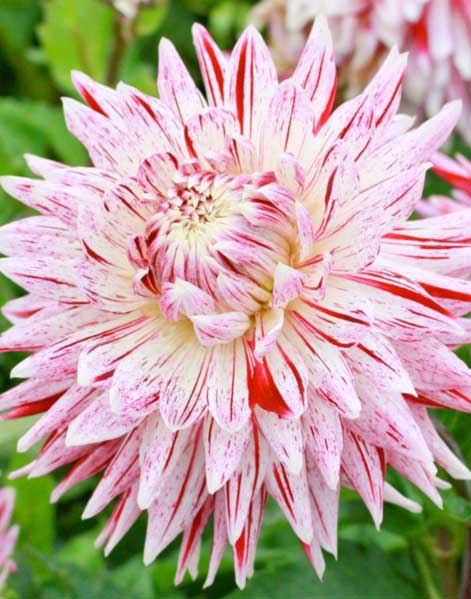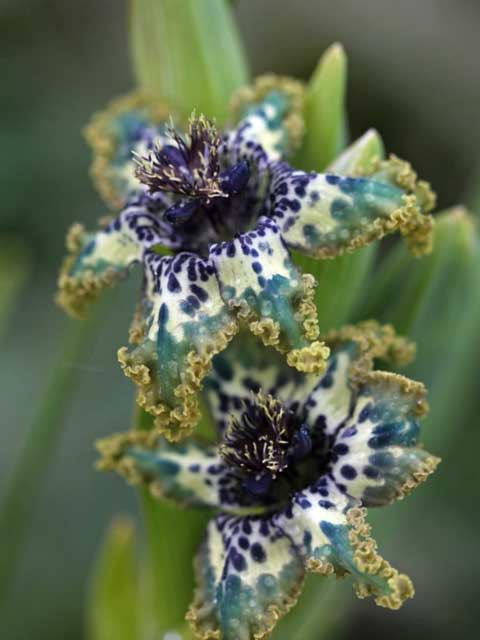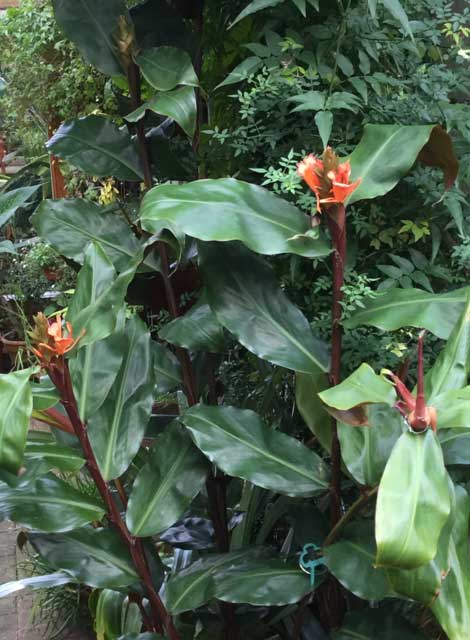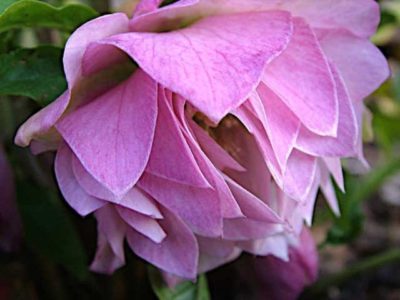March in our Gardens by Philippa Thomas.
In some ways, as our world seems to have shrunken under lockdown, our perspective and imaginations have been expanded and changed. It’s the small, sometimes miraculous things in life, the basic things that make us happy. This past 2020, our gardens have proven to become havens, then aided mental health, calmed things down and have allowed us to enjoy the beauty of plants and fresh air… Yes, indeed, some of our gardens can now, tell a very different story and again, if there’s one thing we’ve learned, it’s the importance of supporting our local businesses, it helps the staff they employ and our local economy, too.
“Working at home with little scope for travel has imbued in people a new interest in their gardens and has changed how they use them. Those lucky enough to have a garden now see them as a green refuge from the world. Local green spaces have become vitally important to communities. People have a renewed interest in nature and getting outdoors more, walking more, cycling more, taking the gym outdoors. Art and performance spaces are developing as a reaction to indoor restrictions. Outdoor education, which has proven benefits, is now being explored more by schools. We are eating and socialising outside. The implications for our parks, streets, gardens and other green spaces is enormous.” Deirdre Prince. G.L.D.A.

I have just planted this brand new dinner plate sized flower, dahlia Avignon.
Maybe, this coming spring, summer, aspire to be slightly quirky and bee friendly. We don’t always need to follow rules rigidly. It’s a most wonderful feeling to experiment. – Yes, maybe push the boundaries a little to see what happens. Our gardens remain a work in progress, I guess a labour of love. Our gardens grow and change season by season and year after year. Possibly, a garden that emphasises foliage rather than flowers will maintain its good looks from spring to autumn. – I have a thing about foliage, especially large foliage and textured foliage, yes even more than flowers! If you place several plants of the same variety next to each other, your eyes will read them as a single shape. Many plants can be grouped together to create large irregular shapes. Clumps and groups can look awesome. Repeating these patterns will help unify a garden and give it a sense of movement. Then, plants that are allowed to spill out over edges – the overall effect is softer and more natural…. Stepping-stones too, can be used to slow the pace down and encourage exploration.
March, I believe is the first month of spring and our gardens are becoming so alive. In some ways of course, it can be a mixed month from sunshine, warm enough to take your coat off to yes, snow, sleet, heavy freezing rain and gusty blasts…All are common well into late winter. Must say, frost is my absolute fear in the garden, in fact I have presently covered a few semi-tender shrubs with plastic containers in order to protect them. Rest assured, our late winter is loosening its grip, so let’s make the most of each sunny day. March can be all about the colour of spring bulbs and early flowering bulbs are certainly beginning to strut their stuff. Perennials too, are poking their little ‘noses’ above the ground and buds of all types and descriptions are starting to swell on trees and shrubs. – So much depends on our weather as the weather affects the degree to which the soil has warmed up, ready for planting. Then of course, as our soil warms up, so do the slugs, remember the delicate shoots of our herbaceous plants are their tastiest snack and nothing they love more than hostas, delphiniums, lupins etc.
LATE WINTER WONDERS
- Hellebore ‘Sugar Plum’, a brand new variety, launched in this 2021, mid- size icing pink flowers
- Hellebore Pink Ballerina, is another new double hardy perennial with almost sculptured like, soft nodding flowers.
Hellebores are the winter wonders of the garden. These beautiful plants have stunning winter flowers and truly are a beacon of sheer delight in our coldest months. These perennial plants burst into flower in our darkest months of the year. Once we get them established, they will clump up and come back year after year, so they are such a great investment for our gardens. Some people cut the leaves off at ground level in order to admire the blooms more clearly and then, it also reduces fungal disease in the leaves…
LILIES

Ferraria Crispa, Starfish Lily, – Iris, South Africa, vanilla scented, now available here in Ireland. A single corm will develop into numerous corms over time.
Lilies have an elegance, few other flowers can rival with such large, exotic blossoms. Lilies are available in a variety of heights, flower shapes and bloom times. Planting several different types of lilies stretches the flowering time. We have Asiatic, Oriental, Midseason bloomers and trumpet types. Unlike tulips and daffodils, lily bulbs do not have a protective covering, it’s important to plant them as soon as possible, so they don’t dry out and really, good to remember they will not tolerate soggy soil. When planting, mix in some organic matter to encourage strong root growth, plant at least three times their depth on their sides, ….this prevents water from becoming trapped in the heart of the bulb which can cause rot.
CONTAINERS, HANGING BASKETS AND BEDDING
For more drama and impact this summer, choose your plants with care. Summer pots and containers, hanging baskets and window boxes really need the wow factor to earn their place in the garden. A fabulous planter full of colour and drama will enhance our gardens, welcome visitors and even support pollinators, too. Maybe, choose plants with the most ‘ bang for your buck’, for the very best results and look out for award winning plants, then buy from a quality supplier so that you can be sure your plants are strong and healthy and ready to grow. Finally, help plants to become more established before exposing them to our weather, by growing them on in a green house or shed, close to a window.
WHAT ABOUT A THRILLER, A FILLER AND A SPILLER?
Gosh, new salvias seem to be being bred continuously, ‘Wine and Roses’, its colour couldn’t be more intense, red and pink, it starts flowering in June and continues nonstop until the first frosts. It can even sometimes make it through our winters; however it’s a good idea to take a few late summer cuttings. Really, it has enormous spikes of velvety blooms, much to the delight of bees and butterflies.
The advantage of sowing annuals from seed is that we can buy a wide range of seeds and grow plants which we rarely see in garden centres.
MIGHT DO, MAYBE MARCH JOBS

Adore this butterfly ginger, Hedychium Greenii, bought this one on one of our day trips. It has the most super reddish-purple stems and amazing shiny dark green upper leaves that are maroon on their undersides.
- If you have a clump of daffodils that are blind, that is to say without flower, once their foliage has faded, lift the clump, separate the bulbs and plant further apart. Most bulbs like to be planted at least 3 times the depth of the bulb.
- Tulips in a vase, continue to grow once cut, to prevent very-heavy headed ones from drooping, push a darning needle through the stem… Must say, I myself love when they dangle, naturally.
- Dig up any weeds that you find with a hand fork so that you can get at those roots, then they won’t have a chance to flower or set seed.
- Cut back epimedium leaves: These gorgeous spring perennials will be coming into bloom soon, so cut back all the leaves to ground level so blooms aren’t hidden in their foliage. Be careful not to damage the emerging flowers.
- Roses: Look at your roses, remove anything that looks unhealthy. This means removing any branches which are spindly or don’t look good, prune them away. We are looking for a goblet shape, then, excellent to feed after pruning.
Our winter flowers are generally more acutely scented than those in our other seasons. I suppose our flowers are working harder to get themselves pollinated.

My Darling Angel Boy, Mr.Prince Precious, I lost him after Valentines Day….I adored him.

My Darling Angel Boy, Mr.Prince Precious, I lost him after Valentines Day….I adored him.
BELIEVE IN YOUR SPACE AND THOROUGHLY ENJOY BEING IN YOUR GARDEN.


